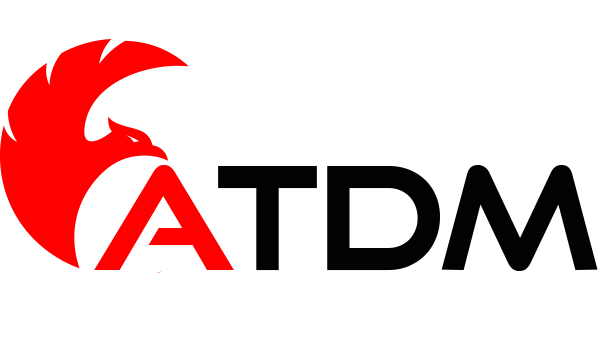Introduction: What Is Scale Wax?
Scale wax is a hard, solid byproduct of crude oil refining. It’s produced during the process of separating lubricating oils and forms as a dense, waxy material that contains a small amount of oil.
Even though it’s less refined than paraffin wax, scale wax plays a huge role in industries like rubber, cable, packaging, and coatings. Its strength, water resistance, and heat stability make it a silent powerhouse in industrial applications.
Table of Contents
ToggleScale Wax vs. Slack Wax – What’s the Difference?
While both scale wax and slack wax come from crude oil, they’re not the same.
Slack wax is an earlier, less refined stage in the wax-making process. It contains a higher oil content (5–35%) and is softer and greasier in texture. It’s usually the starting material that refineries use to make scale wax and paraffin wax through further purification and oil removal.
On the other hand, this industrial wax is harder, denser, and more refined. It typically contains 3–15% oil and has a higher melting point (60–75°C). Because of this, it’s more stable and ideal for industrial coatings, rubber processing, cable filling, and polishing compounds.
In short:
-
Slack wax = early crude wax with more oil, used for blending and refining.
-
Scale wax = more processed, tougher wax used directly in industrial applications.
Both play key roles in the petroleum wax family, but this industrial wax is the go-to material when strength and durability matter most.
How Scale Wax Is Made
Scale wax is produced during the dewaxing of lubricating oil. The process includes:
-
Cooling the oil to form wax crystals.
-
Separating the solid crystals from the liquid oil.
-
The solid part becomes this industrial wax, while the leftover oil is reused.
This process gives this industrial wax its hard, glossy texture and makes it suitable for use in high-temperature or heavy-duty applications.
Main Properties of Scale Wax
| Property | Description |
|---|---|
| Appearance | Brown, yellow, or gray solid |
| Oil Content | 3–15% |
| Melting Point | 60–75°C |
| Odor | Mild hydrocarbon scent |
| Texture | Hard, slightly oily, and brittle |
| Solubility | Insoluble in water, soluble in organic solvents |
These properties make it perfect for coating, sealing, blending, and protection.
Major Uses of Scale Wax
1. Cable and Electrical Industry
Scale wax is used in cable-filling compounds and insulating coatings. It helps prevent moisture and corrosion, ensuring that cables last longer and stay flexible.
2. Rubber and Tire Manufacturing
Rubber manufacturers use this industrial wax to improve elasticity and protect against ozone cracking. It also helps during molding by reducing friction.
3. Metal and Machinery Protection
this industrial wax forms a protective film on metal parts, shielding them from rust, oxidation, and moisture damage.
4. Wood and Furniture Polish
Thanks to its shiny and water-resistant finish, scale wax is used in floor and furniture polishes, making surfaces glossy and durable.
5. Paper and Packaging
It provides a moisture barrier coating on cartons, wrapping paper, and boxes — especially for shipping products in humid areas.
6. Candles and Construction
Scale wax is sometimes used in utility candles, asphalt coatings, and waterproof sealants.
Why Industries Depend on Scale Wax
There are plenty of reasons scale wax remains a favorite industrial material:
-
High heat resistance – performs well in hot environments.
-
Water-repellent – creates a natural barrier against moisture.
-
Long-lasting protection – resists wear and corrosion.
-
Affordable and easy to handle – cheaper than synthetic waxes.
-
Versatile – blends with other waxes, oils, and resins.
Its perfect mix of durability and economy makes it a reliable choice for global manufacturers.
From Scale Wax to Refined Waxes
this industrial wax isn’t always the final product — it’s often refined further into:
-
Semi-refined paraffin wax – for candles and packaging.
-
Fully refined paraffin wax – for cosmetics and pharmaceuticals.
-
Microcrystalline wax – for adhesives, cable jelly, and skincare.
So, this industrial wax is both a valuable product and a raw material for other high-end waxes.
Storage and Handling Tips
To keep scale wax in top condition:
-
Store it in a cool, dry, and ventilated area.
-
Keep away from direct sunlight and flames.
-
Use clean, sealed containers to prevent dust and contamination.
Proper storage ensures long shelf life and consistent performance.
Quick Comparison Table: Scale Wax vs. Slack Wax
| Feature | Scale Wax | Slack Wax |
|---|---|---|
| Oil Content | 3–15% | 5–35% |
| Color | Dark brown to yellow | Light yellow to beige |
| Texture | Hard and brittle | Soft and greasy |
| Refining Level | Higher | Lower |
| Main Use | Industrial coatings, cables, rubber | Feedstock for paraffin wax |
| Melting Point | 60–75°C | 45–65°C |
ATDM – Your Trusted Source for Scale Wax and Slack Wax
When it comes to top-quality this industrial wax and slack wax, ATDM is a global leader and reliable supplier.
ATDM provides premium-grade petroleum waxes that meet the highest industrial standards — whether you need this industrial wax for coatings, cables, or rubber, or slack wax for refining and blending, ATDM ensures consistent performance, purity, and durability.
With decades of expertise in the petrochemical and wax industry, ATDM continues to serve manufacturers worldwide with reliable, high-quality wax solutions tailored to every need.
Final Thoughts
Now you truly know everything about this industrial wax — and how it connects to its sibling, slack wax. Both play critical roles in keeping products protected, flexible, and long-lasting.
From the inside of cables to the shine on polished wood, scale wax is a trusted industrial hero. And with ATDM’s dependable supply, you can always count on quality, safety, and performance.


